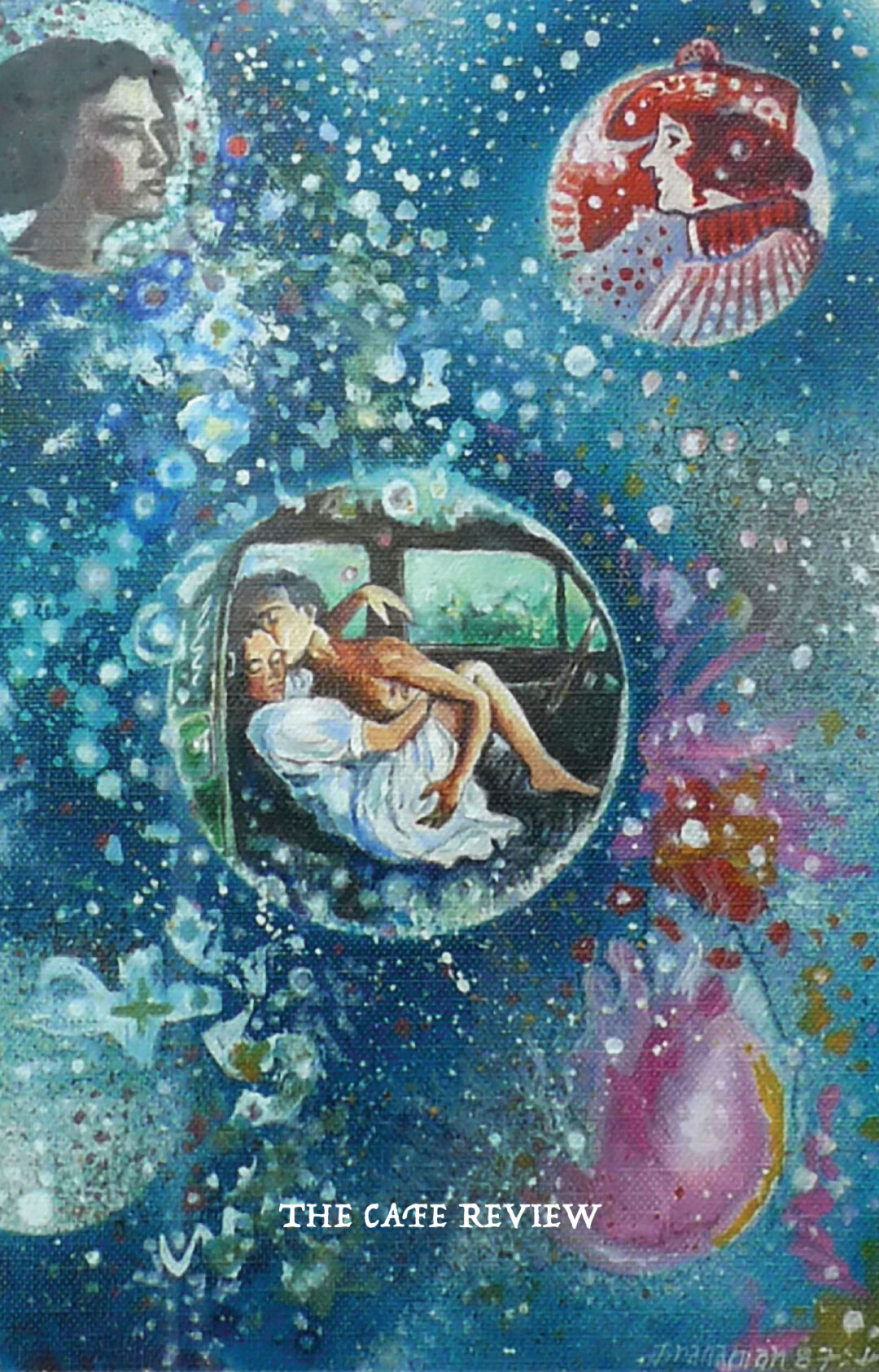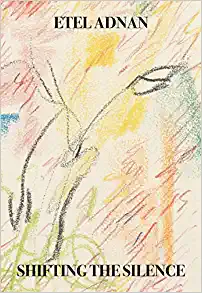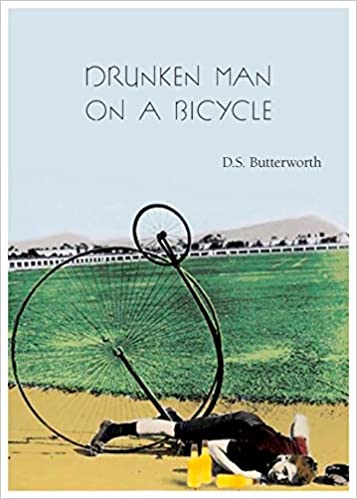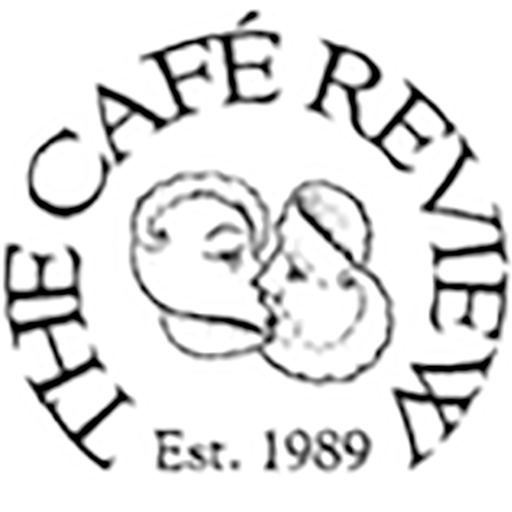Douglas Blazek

Douglas Blazek: b. December 31, 1941, is a Polish–American poet and editor who published the subversive literary chapbook Ole, through which he brought critical attention to many non–establishment poets, such as Charles Bukowski, and was proprietor of the Open Skull Press. He is one of the founders of the Mimeo Revolution, a literary movement that sprang up concurrently with The Beats. During his sixty–year career, he has published more than fifteen hundred poems. His work has been described as a “course correction” for the culture dedicated to “making poetry dangerous.”
Shifting the Silence

Shifting the Silence, by Etel Adnan.
Nightboat Books, 2020,
88 pages, paper, $15.95,
ISBN: 978–1–64362–030–5
Shifting the Silence begins with a one–word affirmation: “Yes,” writes Adnan. “Yes. The shifting, after the return of the tide, and my own.” We are, on the first page, immediately thrown into Adnan’s planetary mind. Her predilections with the cosmos, the tides, sound and silence, and, too, despair. Shifting the Silence is an intimate revelation of a mind at work, wildly free and open to the forces of the world, ungirded, far seeing, and confronting its darkest corners and the approach of life’s end — her own, and that of “civilization as we know it.”
Etel Adnan was born in 1925 and raised in Beirut, Lebanon, her mother Greek and her father Syrian. She was educated in French schools and grew up speaking Greek and Arabic, studied philosophy at the Sorbonne, and later pursued post–graduate studies in philosophy at Berkeley and Harvard. Known as much for her paintings — austere horizons distilled in color, the affirming presence of geometry, the sun — as her writing, Adnan published more than twenty novels, books of poetry, and essays in her life, and she exhibited widely. Omar Berrada in Frieze magazine referred to Adnan’s as a “mind that knows no borders, geographical or disciplinary.” Shifting the Silence is a record of her struggle with the ultimate border, and her desire to both transcend and accept it. The book, written as she navigated the end of her life, is replete with ruminations and grief, but too with a vigorous joy for life.
Adnan’s oeuvre consistently reveals her faithful wrestling with the fullness of the world around her, and this book is no different. The writer moves from the most intimate expressions of personal feeling, through the political moment, to our presence in the universe; from the planetary, to what she calls “the sanity of the physical world.” In speaking of her life, she notes “I threw away my compass to the waves,” following uncharted roads and staying with confusion where it led:
We’re on a planet sustained by nothing, carried
through pure space by a willful star made of fire and in
constant ebullition. We’re travelers covering traveling
grounds. Going, always going.
Shifting the Silence reads partly as poetic journal and part stream–of–consciousness amalgam of a restless mind navigating longing, desire, sorrow, and endings. There are so many philosophical gems here, wisdom offered freely by an artist who has refused to be reduced by society’s restrictions or cowed by fear of death. Yet she offers frank acknowledgement of fear — and yearns for all the things she will not be able to do. In the book, her limitless mind realizes the body is now constrained with no place to go. In parallel, she reflects on visions of our fading planet — wildfires, wars, warming oceans, struggling fish, and the virus. But, she says, “We have to deal with hopelessness” and turns again to the vastness of the universe:
I consider the light that enters the room in the early
hours of the day as a messenger of the sun, a direct
voyager, a particle, a wave, who knows, but an object of
sorts that left its solar source, covered miles and landed
on my skin. So the universe constantly visits while
waiting for us to reverse that itinerary.
Friends visit and inspire Adnan’s thinking through conversation and camaraderie, a glass of wine. She continues to feel freedom in the “joy of frantic concepts.” She muses on the spiritual clarity of works of Malevich and how they inscribe themselves on our bodies; she concludes that Bach’s music is “a needle on the cosmic balance.” She turns again and again to the beauty in the world, and invites her reader to see the same: “There’s a dance of fireflies, little lights turning around the boats of the Bay, tiny creatures chanting, fish jumping — the feast of early summer subsiding in the heat, and lemonades!”
When Adnan asks “What’s left?” and “How many tomorrows to worry about?” she invites us to ask the same questions of ourselves, and our planetary life as we know it. Shifting the Silence propels us to consider our days and to look for joy too, to observe ourselves passionately in the world. Shifting the Silence, invites readers to dive into both what is spoken about and what is ignored, to be relentless in our curiosity about this experience of life and death.
Etal Adnan passed away in December 2021; in her 96 years, she witnessed and articulated vast global, political and environmental transformations with equanimity and grace. As she once told her partner Simone Fattal, “When I die, the universe will have lost its best friend, someone who loved it with a passion.” That loss is also ours.
— Julie Poitras Santos
Drunken Man on a Bicycle

Drunken Man on a Bicycle.
by D.S. Butterworth.
Lynx House Press, 2021,
74 pages, paper, $18,
ISBN: 0899241786
The title of D.S. Butterworth’s recent collection establishes a conceit for an unrecognizable America: Drunken Man on a Bicycle. In poems that blur public and private spaces, and sometimes pry them apart again, the absurdity and danger of our social reality outside trace back to something broken inside. Democratic values once assured civic discourse, bolstered national identity. These give way to circus life, which tilts against reason and lifts free from the secure ground of tradition. The careening of wheels passes for communal destiny.
The drunken man on a bicycle tumbles across poems gathering a constellation of imagery, here framing mythic visions of national decline, there pondering the magic of presidential hairdos. There are tonal shifts from the prophetic to the satirical, to the elegiac, to something like lyrical reassurance near the end. But those modes require stable perspectives, moral certainty, and poetic voice can only play at them:
The drunk on the bicycle is America and its king,
is the crowd and ghost of crowd, he is the sleeping
part of the mind . . . (14)
The desire for prophecy — and that poetry might be its vehicle — seems almost able to take itself seriously. But underlying these poems is a persistent lyrical probing that wants to make sense of the irrational.
Butterworth’s poems mine cultural memory for reference points. We seem to be reliving our own Gettysburgs and Alamos, can recognize in our politicians Medicis and Napoleons (“let us number them so we can reassemble the puzzle”). Ghosts of Eliot and Yeats appear and disappear, Shakespeare’s Lear laments: they are all masks that the poet adopts. But the mind of the past feels too remote. Our cultural dysphoria has mythological proportions but not antecedents. This is poetry that wants art to point the way out. But the drunken man on the bicycle is the poet, too.
There are poems and lines that pull the present into focus in striking ways, that defamiliarize the “glean of the inscrutable now.” Democratic values are reborn as rough beasts, “freedom as dark matter.” Our words are now distilled for their “intoxicants.” “[I]nk sluiced off newspapers” becomes “tinctures of anger and confusion.” In these poems, the modernist concern to achieve the adequate symbol confronts an attitude towards language summed up in the verb choice “inking”: verbal manipulations that pull “free from words, free from meaning.”
From this “whirligigging” wreckage emerges recurrent imagery of “animal shapes rich and strange.” Ferret and weasel and “dinner jacket monkey” populate conference rooms. And there again is monkey, “riding the back of a dog godlike,” whose existence is word play, a manipulation of sound.
T.S. Eliot described modern life as a panorama of futility and anarchy. Butterworth names it the “miracle of flying trash.” The miracle contemplated is just how it catches the eye and holds attention. How have we come to “decree[ ] sacred this manner of inebriation”?
Poem after poem highlights the “nation,” an abstraction that becomes conspicuous in its repetition. Sometimes it appears ghostly, like a placeholder, to trace the extinction of what once passed for personal desire and freedom. In the poem “Elegy,” the nation has an unconscious life that seems aware of its shelf life:
Weep, Fool. A nation crumbles from within, the same
way it bloomed, a flower of stone withering under weather
of stomach and spleen. Poor Egg, poor Flower. We fall in
Upon
ourselves and there’s rain. . . .
The mask of Lear is a pose from which to elegize, and elsewhere, Ahab’s quest registers the ambiguity of the nation’s Prometheanism:
. . . sometimes you must kill
the thing you love to make room for your
idea of it, so you can polish it into a rare
sapphire where you can still see, if you really
look, a glimmer of even older ideas like
freedom or justice from behind the glass,
behind the bars. Such beautiful dreams. Meh
The desire to penetrate the mask of alternative facts, to synthesize opposition, to assemble fragments into some visionary whole — these are impulses that shape the collection. And it makes us almost believe in the absurd, resilient idea that poetic language can do all that.
— Christopher Malone
Disease is the Best Cure

by Stephen Ellis
When will the ravaging
be over? It will
never be over, because
at this point, it is
the absolute condition
of what remains
of life, its total
occupation, a kind of
diversion to myself
of its ultimate aim,
my comfort, and revenge
against the terror
it continues to bring on.
The toxic cells
think they have perhaps
a 92% chance of
overwhelming those
that remain healthy.
The medical professionals
hold my chances of
survival at about 12%.
Of close friends,
there are no absolutes,
which is as it ought to be,
although 72% aren’t
Sure. For my own part,
I have no idea. I just
assume that all of
the above assumptions
are true, and since I can
still hold a pen firmly
enough to write this,
while knowing all disease
cures itself, whether
the patient survives or not,
I could care less.


